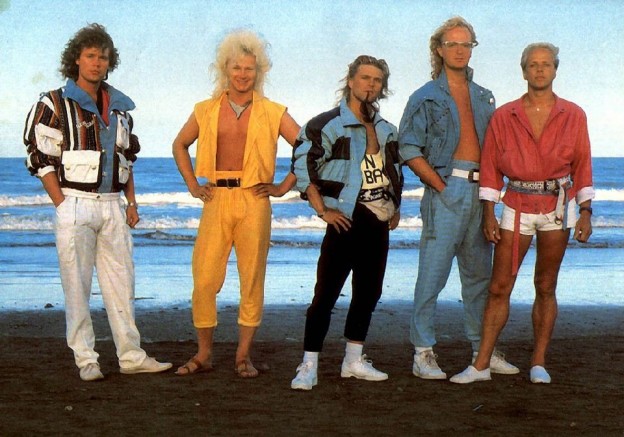5 Funeral Service Trends You Should Ignore
February 27th, 2013
Too often we enjoy telling people what they should do with their businesses. “Chirping from the cheap seats,” as I like to call it.
Instead of looking at trends to embrace, I thought I would go in another direction and talk about 5 trends in funeral service that you should look the other way from.
Without further ado, here they are:
1. Give the customer what they need
Typically, our families are in desperate need of grief support and presumably the associated services and merchandise that goes with them (the key rationale for the value of what we do). However, due to a lack of family education, funeral care fumbles and the connection between grief support and services/merchandise is missing.
As the funeral director pushes services/merchandise rather than things like grief support, the families perceive a financial bias from the funeral director. Family education is the solution to this disconnect, but typically learning is very difficult in an at-need situation.
Trying to get them to engage grief support activities is seen as money grab. Either make a huge commitment to educating your community or give the family what it wants while exposing them to what they really need.
2. Build it and they will come…
We have a tremendous amount of extra chapel capacity in our industry, some estimate as high as 50%. And this number will only get worse with the growth of direct services and the “do-it-yourself” segment.
Building new facilities will only increase the overhead albatross around your neck that will push you to raise prices and focus on the financial factors that will support such a decision. Exhaust every other possibility you can before pursuing this trend.
3. Customer surveys and helpful consultants
Mr. Ford had it right when he said, “If I had asked people what they wanted, they would have said faster horses!” There is always a gap between customers understanding of their rational needs and their emotional ones.
I believe there is a gap in the perception of funeral service needs due those dramatic emotional shifts associated with the loss of a loved one. If we listen to what families want before the death event, we will have a warped view of what they want at-need.
Consequently, we find ourselves doing more and more what we should not be doing at all! We shouldn’t be finding a way to do it better, we should be finding the right way to do it. If Mr. Ford were here today, he’d say instead of delivering the fastest horse around, consider delivering the best mode of transportation.
4. Check-the-box marketing
Millions of dollars a year are wasted in funeral service marketing. Traditional, interruption-based marketing is a thing of the past and has been replaced with permission-based inbound marketing strategies and tactics.
Social media, content marketing and websites are part of the new marketing formula that builds relationships (not just revenue) over time. If you insist on traditional marketing, make sure you track the performance of your mass media approaches. I believe you will be startled by the results (or lack thereof) and reconsider inbound marketing.
5. The Baby Boomers are coming!
I have sat through seminars and meetings where the primary focus is the Baby Boomer death rate spike. Some predicted 2005 as the start of this huge spike. Others said 2010, and now many folks are predicting the end of this decade.
This discussion always felt like the industry was grasping for salvation through external forces rather than rolling up our sleeves and seeing what we can do about our predicament. Do not depend on Baby Boomers delivering you from evil.
They will only laugh at you as they pursue alternative choices that more effectively deliver what they want. Don’t wait for the Baby Boomer train because it is on another track that will not make a stop for traditional funerals!
What other trends are out there that we should be careful with? Let me know. I need more seeds for my “cheap seat chirping”!
 ABOUT THE AUTHOR
ABOUT THE AUTHOR
Lajos Szabo, a licensed funeral director in Ohio and Architect by training, has been involved in funeral service since 1988. His portfolio of work includes, Schoedinger Funeral & Cremation Service, PMP Rooms, Cut Caskets, Meaningful Memories, Funeral of the Future research and several US patents specific to our industry.[RR1] Currently, Lajos is the President of Funeral Operations at funeralOne. He uses his industry perspective to provide organizational leadership and develop several key projects in pursuit of his personal mission: changing funeral service to more effectively meet the needs of people touched by death. funeralOne’s solutions include:website design, aftercare, eCommerce, and personalization software. For more information about funeralOne, visit www.funeralOne.com.







I enjoy the perspective of this article, it recognizes some key aspects of the funeral industry. I would like to offer the following commentary as it was inspired by your post:
1. I am not convinced that specifically making “grief-support” a commodity is a long term solution. Grief support activities seems like a wide net, especially when one considers the nomad, the memorialist, the normalizer, the activist, and the seeker as “types” of grievers. Is this a call of the industry to lead or to follow? There seems to be disconnect here with the later stated point about faster horses. So, if we concede that funerals are actually services for the living then how do we reconcile that with focusing the industry market/sales machine solely at the dead?
2. Chapel space quantity is not the issue it is the quality. Consumers would prefer to use a funeral specific facility, but choose not to due to the “money grab” mentality prevalent in most funeral customer services. Unused facilities is not a result of customers not wanting the product but rather a failure in product delivery.
3. “At-need” marketing and sales seems to contribute to the “money grab” perception. In the wake of a funeral experience most consumers reflect upon their experience as being taken advantage of. That is why the pre-need sales can and must succeed – they eliminate the process of making financial decisions under a consumer’s most vulnerable circumstances. That predatory sales technique has been entrenched in the funeral industry for too long. To educate consumers that a funeral experience can, and should, be void of any “shopping” and “spending” is advantageous for all.
4. Social marketing, etc. are definitely a new weapon in the arsenal – but if it is not punctuated and validated by person-to-person experience it is all for nothing.
5. The biggest change made by the Boomers is simple – it is that worth is determined by philosophy not by price.The old guard of the funeral industry refuses to see this simple fact because they have never been able to function beyond “the numbers”. They simply think that the Boomers equal “more”…more customers, more money, etc..they need to quickly realize that, unlike the tradition of generations past, the Boomers do not “know” or “assume” the funeral industry is necessary.
Well, that is my two cents. Thanks for the great article as it offered good points for thought and discussion.
[…] Article from: Lajos Szabo of funeralOne […]
[…] 5 Funeral Service Trends You Should Ignore […]
[…] – 5 Funeral Service Trends You Should Ignore […]